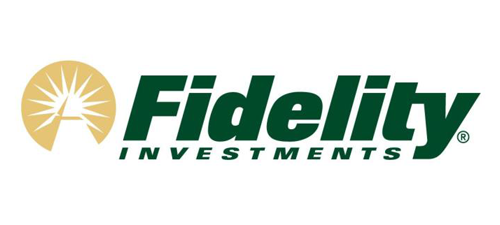How to Open an IRA
An IRA, or Individual Retirement Account, is a type of investment account designed specifically for retirement savings. Unlike a 401(k), which would be offered through your employer, an IRA is something you open on your own, outside of work.
If you aren’t sure if you’re ready to invest yet or want a big picture investing overview, you can start with our investing cheat sheet.
But if you are interested in opening an IRA, here’s what you’ll do.
Decide between a traditional IRA and a Roth IRA
You’ll first need to decide what type of IRA you want to open – traditional vs Roth.
With a traditional IRA, your contributions are tax-deferred. This means you contribute pre-tax money to your account and your investments can grow tax-free while in your account. Then when you finally reach retirement, you’ll have to pay income taxes on your withdrawals. (You’ll be taxed at your income tax rate at the time of the withdrawals.)
With a Roth IRA, it works a little differently. Instead of making pre-tax contributions, you contribute money that has already been taxed. But then your investments are still allowed to grow tax-free, and you won’t be taxed again when you withdraw your funds in retirement.
So essentially the difference comes down to getting a tax break now (traditional) or getting a tax break later (Roth). If you’re not sure which is right for you, we can help you decide in our guide: Traditional IRA vs Roth IRA. In it, we also cover IRA eligibility. Because you’ll first want to make sure you’re eligible for a specific type of IRA before you start the process of opening one.
And if you’re interested in rolling over from a 401(k) to an IRA, we can help you with that too.
Choose a place to open your account
Next up, you’ll have to decide on where to open your IRA. There are a number of reputable competing IRA providers to choose from, and honestly, most of them can get the job done. But before you start comparing, you’ll want to think about whether you’re a hands-on or hands-off investor. (There are great options for either path.)
For the DIY investors
If you’re ready to select your own investments, then you’ll want to open your IRA with an online brokerage. And if you’re feeling a little intimidated about deciding which investments are right for you, don’t worry, it doesn’t need to be too tricky. Often a simple portfolio comprised of a few, low-fee, diversified funds is enough to get started.
As you compare brokers, look for ones that charge no/low account fees and commissions, and pay attention to account minimums – some have them, some don’t. Also make sure your provider offers a wide range of investment choices (mutual funds and exchange-traded funds, aka ETFs) and an appropriate level of customer support based on your needs.
Here are a few popular IRA providers to choose from. Keep in mind, these numbers are subject to change. So be sure to check their websites before opening an account.
| Broker | Commissions | Account Minimum | Start Investing |
|---|---|---|---|
 | $0 per trade | $0 | Open Account |
 | $0 per trade | $0 | Open Account |
 | $0 per trade | $0 | Open Account |
 | $0 per trade | $0 | Open Account |
For the “not so” DIY investors
If you’re more of the hands off type and would prefer to have someone else manage your investments for you, then you have a few choices.
1) You could work with a financial professional, like a financial advisor, who will help you manage you manage your portfolio for a fee. This can get expensive over time, so you’ll want to make sure you aren’t overpaying.
2) As an alternative, you could go with a robo-advisor, which automatically manages your portfolio for you for a relatively small fee.
The number of robo-advisors in the marketplace seems to grow every year. But two consistently popular choices that charge low fees and have low/no minimum account requirements are Betterment and Wealthfront. Both charge an annual management fee of 0.25%, which is pretty low. And Betterment has no minimum account balance while Wealthfront has a minimum account balance of only $500. And although they’re “relative” newcomers to the investing world, they both manage billions of dollars for their customers. So they’re not exactly newbies anymore.
Apply to open an account
When you’re ready to open an account, the provider will give step-by-step instructions on their website. You can do it all online and the entire process should only take a few minutes.
They’ll ask you to fill out some personal information, like your name, address, and social security number. You’ll also need to decide what type of account you want to open – traditional vs Roth vs 401(k) rollover. If you’re going to be linking your account to a bank account, they may also ask for your bank account number and routing number. It should be fairly basic info, but you may want to gather it up before hand.
Funding your account and selecting your investments
You may be required to make an initial deposit when you open your fund (but you might not be required to). Either way, you’ll want to make sure you’re consistently making regular contributions to your IRA over time. And you can even set up automatic transfers from your paycheck or your bank account to make the process that much smoother.
But you should also be aware there are annual contributions limits on IRAs. As of 2021, you can contribute a maximum of $6,000 if you’re younger than 50 and $7,000 if you’re 50 or older. And this amount is across all of your IRAs. So if you have multiple accounts, for instance a traditional IRA and a Roth IRA, you’ll have to spread it across both.
Selecting investments
If you do go the DIY route, you’ll be in charge of selecting your own investments for your IRA. But don’t panic! It’s doesn’t need to be overly complicated or that hard. We can help you understand investing basics, like how to build a portfolio and determine an appropriate asset allocation (mix of investments) starting with our investing cheat sheet.
Summary
Whatever you choose, traditional vs Roth, brokerage account vs robo-advisor, opening an IRA can be a great way to start saving and investing for retirement. And the sooner you get started, the faster your money will grow, making it easier to reach your goals. Even if you start small and build up over time, that’s still a big win. The key is to get started early and stick with it. So get to it!
Anything else we can help you with?
Start investing with a brokerage account or robo-advisor
How to automate your finances to save more



